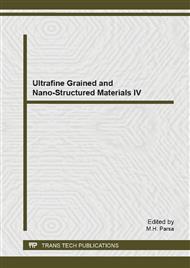p.441
p.446
p.451
p.456
p.461
p.466
p.471
p.476
p.482
Polyamide Decorated Graphene Sheet as a Potential Antimicrobial Agent: Synthesis, Characterization
Abstract:
We propose an innovative approach to impart graphene properties to the surface of thin-film composites polyamide. Specifically, biocidal properties were obtained by covalently binding graphene to the polyamide surface. Grafting of polymer onto graphene generate nanocomposites, which heighten anti-bacterial property by changing on morphology and graphene structure. Purpose of this survey is studying the degradation of bacteria wall by grafted graphene to polyamide. In this study, the graphene should be functionalized in order to boost the side activities, antitoxin property and dispersion in solution. Then, the covalent bonds are established between graphene and polyamide by a linkage function such as ethylendiamine. The result of grafting polymer has been characterized by TGA, SEM and XRD and evaluated for the anti-bacterial property of grafted polymer by analysis on E.Coil bacteria cells. The test of bacteria in present of grafted polyamide lead to destruction of 62% of bacteria in 1 hr.
Info:
Periodical:
Pages:
461-465
Citation:
Online since:
November 2013
Authors:
Keywords:
Price:
Сopyright:
© 2014 Trans Tech Publications Ltd. All Rights Reserved
Share:
Citation:



